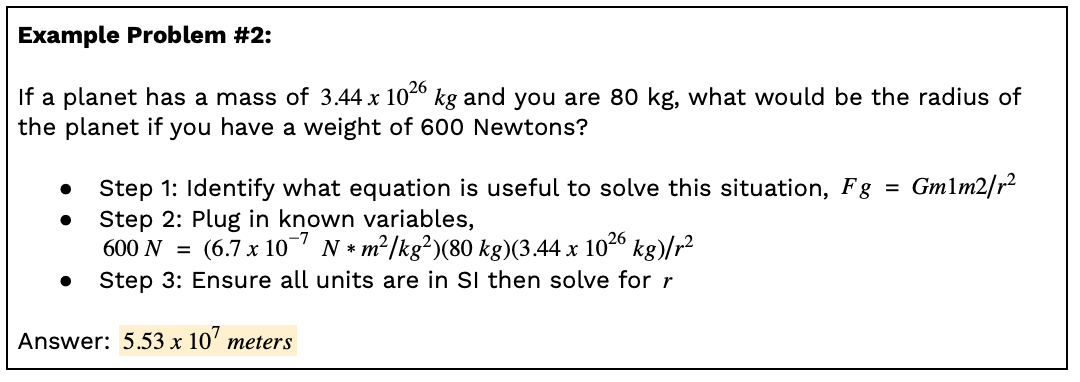3.3 Gravitational and Electric Forces
4 min read•june 18, 2024
Peter Apps
Kashvi Panjolia
AP Physics 1 🎡
257 resourcesSee Units
Gravitational Force
Gravitational force describes the interaction of one object with mass with another object with mass.

Image courtesy of Giphy.
Gravity is the force by which a planet or other body draws objects toward its center. The force of gravity keeps all of the planets in orbit around the sun. Earth's gravity is what keeps you on the ground and what makes things fall. This force is always attractive. The gravitational force is a long-range force, meaning it acts at a distance and does not need to touch the object to act on it. In AP Physics 1, the gravitational force is the only long-range force you will learn. All the other forces are contact forces because they need to be actively touching the object in order to act on the object.
The gravitational force becomes important only when the masses of the objects are very large, such as planets and stars. The gravitational force is responsible for the orbits of planets and moons, the motion of comets, the formation of galaxies and galaxy clusters, and the behavior of the large-scale structure of the universe.
Equation: Fg = mg, where Fg is the force of gravity in Newtons, m is mass in kilograms, and g is the acceleration due to gravity in m/s/s
As you already know, g is the acceleration due to gravity on the Earth's surface, and has a value of 9.8 m/s^2. To calculate g, we can use the equation g = Fg/m, which is obtained by dividing both sides of the equation above by m.
Newton's Universal Law of Gravitation
Every particle attracts every other particle in the universe with a force that is directly proportional to the product of their masses and inversely proportional to the square of the distance between their centers. These relationships are modeled by the equation below. This law applies to all objects in the universe and explains the observed gravitational attraction between masses.
Equation: Fg = G(m1*m2)/r^2, where Fg is the Force of Gravity in Newtons, G is the gravitational constant (6.7 x 10^-11 N*m^2/kg^2), m is mass in kilograms, and r is the radius in meters.
The gravitational constant is a very small number, which means that the force of gravity between two objects is usually very weak. This is why you are not significantly attracted to the pencil next to you. However, the pencil does have a very weak gravitational force, as does every object in the universe.
Since the product of the two masses in the equation for Newton's Law of Gravitation is in the numerator, we can conclude that an increase in either of the masses (while keeping all other variables constant) will cause an increase in the gravitational force, establishing a directly proportional relationship between the masses and the force. Since r^2, the distance between the two masses, is in the denominator of this equation, we can conclude that an increase in r will result in a decrease in the gravitational force. More specifically, an increase in r will decrease the force by 1/(r^2), creating an inverse-square relationship between the distance between the two masses and the gravitational force.


Practice Problems
1. Two objects with masses of 10 kg and 5 kg are located 3 meters apart. What is the gravitational force between them?
a) 0.22 N
b) 2.2 N
c) 22 N
d) 220 N
Answer: a) 0.22 N
Explanation: F = G(m1m2)/r^2 = (6.67x10^-11)(10 kg)(5 kg)/(3^2) = 0.22 N
2. A planet with a mass of 5 x 10^24 kg is located 1.5 x 10^11 meters away from a star with a mass of 2 x 10^30 kg. What is the gravitational force between them?
a) 2.22 x 10^11 N
b) 2.22 x 10^13 N
c) 2.22 x 10^15 N
d) 2.22 x 10^17 N
Answer: d) 2.22 x 10^17 N
Explanation: F = G(m1*m2)/r^2 = (6.67x10^-11)(5 x 10^24)(2 x 10^30)/((1.5 x 10^11)^2) = 2.22 x 10^17 N
3. A satellite with a mass of 500 kg is located at a distance of 1000 km from the center of Earth, which has a mass of 5.97 x 10^24 kg. What is the gravitational force acting on the satellite?
a) 1.96 x 10^4 N
b) 3.92 x 10^4 N
c) 7.84 x 10^4 N
d) 1.57 x 10^5 N
Answer: c) 7.84 x 10^4 N
Explanation: F = G(m1*m2)/r^2 = (6.67x10^-11)(500)(5.97 x 10^24)/((1000 x 10^3)^2) = 7.84 x 10^4 N
🎥Watch: AP Physics 1 - Unit 3 Streams
Browse Study Guides By Unit
👟Unit 1 – Kinematics
🌀Unit 2 – Dynamics
🚀Unit 3 – Circular Motion & Gravitation
⚡️Unit 4 – Energy
⛳️Unit 5 – Momentum
🎸Unit 6 – Simple Harmonic Motion
🎡Unit 7 – Torque & Rotational Motion
💡Unit 8 – Electric Charges & Electric Force
🔋Unit 9 – DC Circuits
🔊Unit 10 – Mechanical Waves & Sound
📚Study Tools
🧐Exam Skills

Fiveable
Resources
© 2025 Fiveable Inc. All rights reserved.